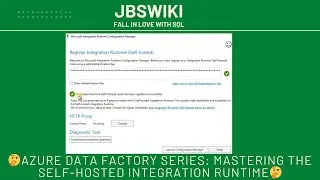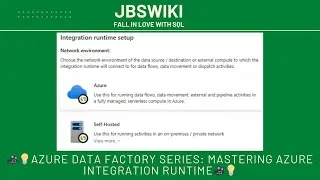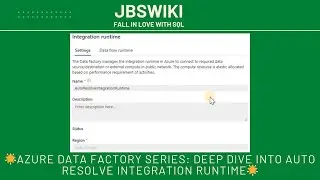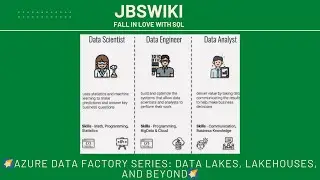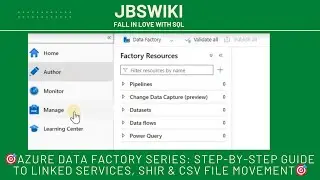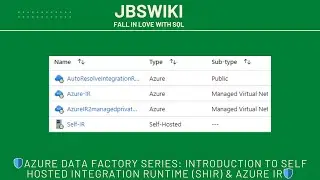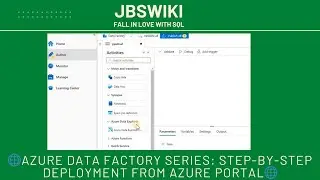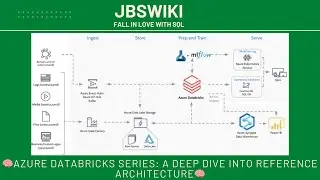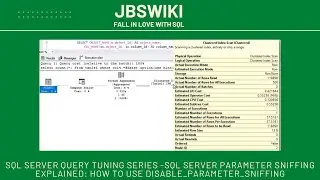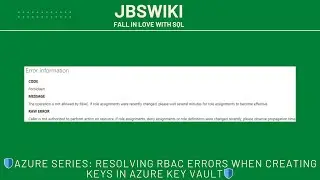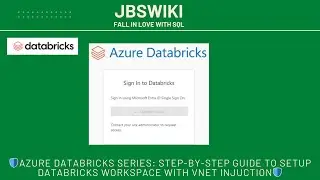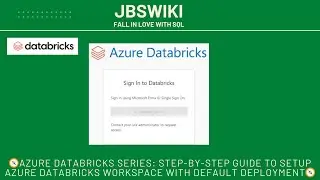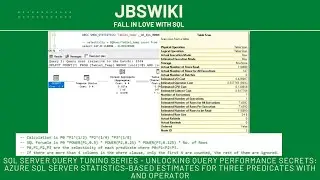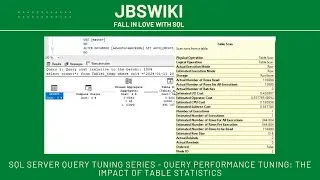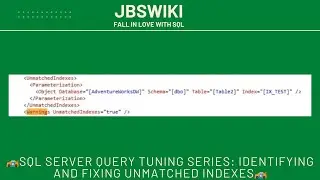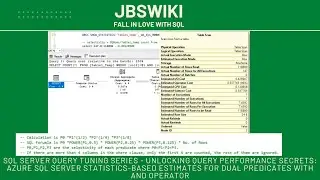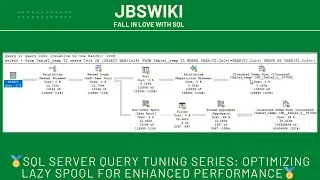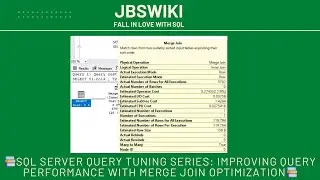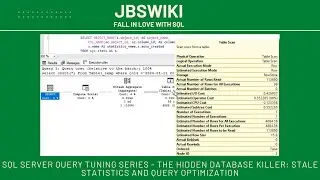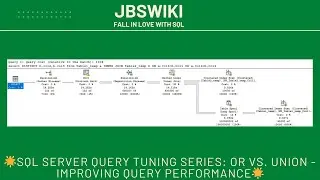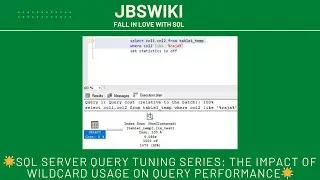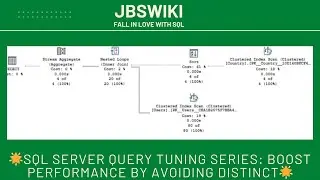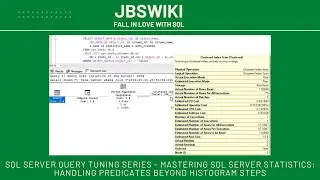SQL Server Performance Series - Converting Primary Key to Non-Clustered Index @jbswiki
SQL Server Performance Series - Converting Primary Key to Non-Clustered Index for Reducing Last Page Insert Contention @jbswiki #sqlserver
Welcome back to our SQL Server Performance Series, where we're on a mission to uncover the secrets of optimizing database performance. In our previous installment, titled "SQL Server 2016: Unveiling the Last Page Insert Contention," we dived deep into the challenges of insert performance slowdowns. The tests we conducted yielded frustratingly sluggish results, with an astonishing 1230 executions of the Insert stored procedure taking an average of 24 seconds each to complete. The culprit? Last Page Insert Contention. But fear not, because in this video, we're armed with a strategic workaround that promises to revolutionize our insert performance.
Understanding Last Page Insert Contention:
Before we delve into the solution, let's refresh our understanding of Last Page Insert Contention. When multiple transactions attempt to insert data into the same page of a clustered index, contention arises. As a result, these transactions are forced to wait, impacting overall performance. The conventional wisdom suggests that a clustered index on the primary key ensures data integrity and quick lookups, but in scenarios with heavy insert operations, it can lead to bottlenecks due to contention on the last page of the index.
Enter the Non-Clustered Index Solution:
Our strategy to combat Last Page Insert Contention revolves around a clever conversion. We're taking the existing clustered index on the primary key and transforming it into a non-clustered index. This change is especially effective when the primary key column is an identity column. By making this transformation, we're essentially detaching the physical order of data from the index, allowing inserts to occur more smoothly without the bottleneck caused by contention on the last page.
Implementation Steps:
In this video, we'll walk you through the step-by-step process of implementing the conversion from a clustered to a non-clustered index on the primary key. We'll start by identifying the primary key column and its characteristics. Then, armed with this knowledge, we'll perform the conversion using SQL Server Management Studio. Our tutorial will cover each stage of the process, from scripting the index change to verifying its effectiveness through comprehensive performance tests.
The Transformation Journey:
As we embark on this transformation journey, you'll witness firsthand the changes in SQL scripts and index structures. You'll understand the intricacies of executing ALTER statements and reorganizing data to align with the newly established non-clustered index. Throughout the journey, we'll share best practices, potential pitfalls to watch out for, and tips to ensure a seamless transition.
Benchmarking Performance:
The true litmus test of our solution lies in the numbers. We'll conduct an array of performance tests to measure the impact of the non-clustered index conversion. By comparing execution times, throughput, and overall database responsiveness before and after the transformation, we aim to quantify the tangible benefits that this strategic move can bring to your database environment.
Benefits Beyond Inserts:
While the focus of this video is on reducing Last Page Insert Contention, the benefits of the non-clustered index conversion extend beyond inserts. We'll explore how this transformation can positively influence other database operations such as updates, deletes, and even query performance. By maintaining data integrity and enabling efficient data access, this conversion can significantly enhance the overall health of your database system.
Real-world Scenarios and Considerations:
No database environment is identical, and our video acknowledges that fact. We'll discuss various real-world scenarios where the conversion might be especially beneficial. Whether you're dealing with high-velocity data streams, rapidly changing data, or scenarios where insert performance is a critical concern, we'll provide insights into when and how to implement this solution effectively.
Conclusion:
As we wrap up this video, you'll have gained a comprehensive understanding of Last Page Insert Contention, its implications on performance, and a strategic solution to combat it. By converting the clustered index on the primary key to a non-clustered index, you're not just solving contention; you're unlocking the true potential of your database. Faster inserts, improved data integrity, and a smoother overall experience await those who choose to implement this transformation.
Join the Transformation:
Are you ready to take your database performance to the next level? Join us on this transformational journey as we convert the primary key clustered index to a non-clustered index and witness the remarkable improvements in insert performance. Don't let Last Page Insert Contention hold your database back any longer.








